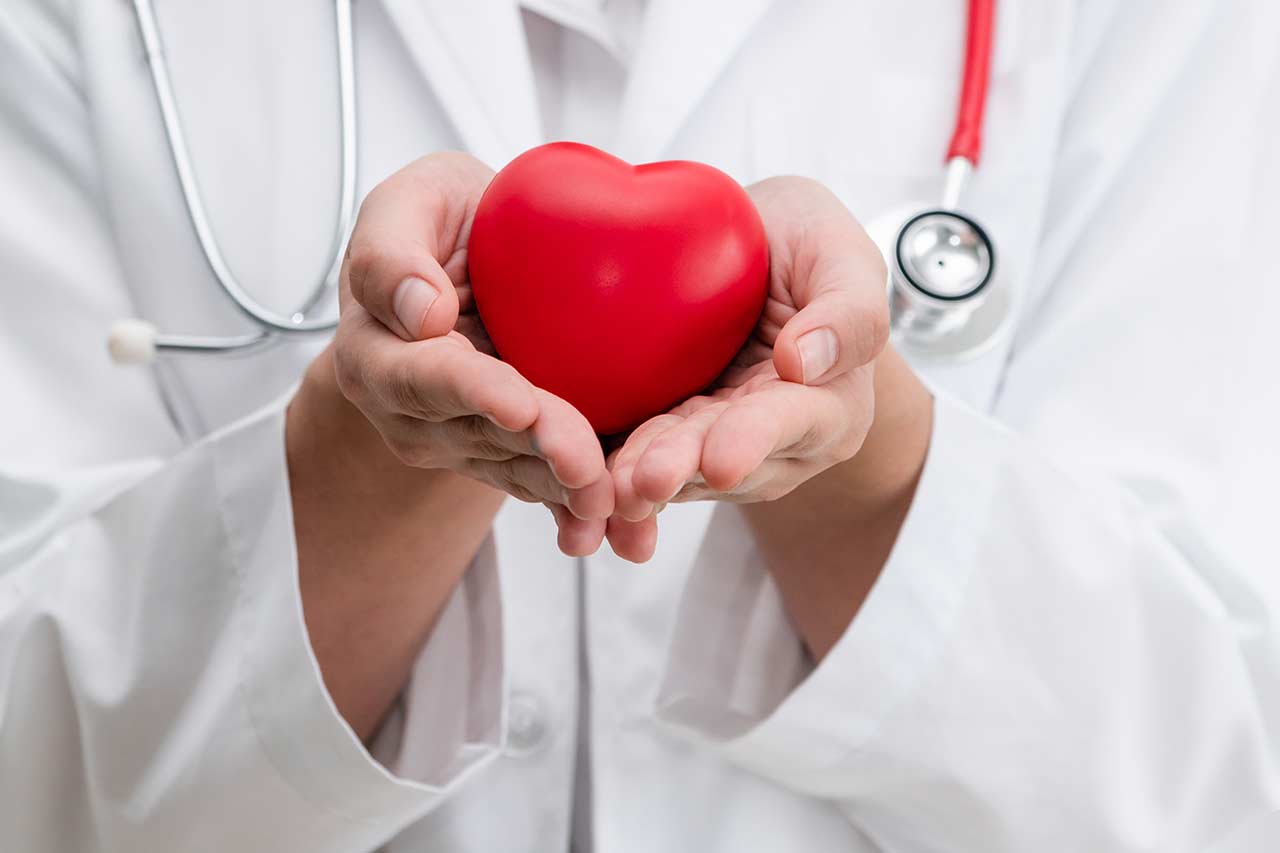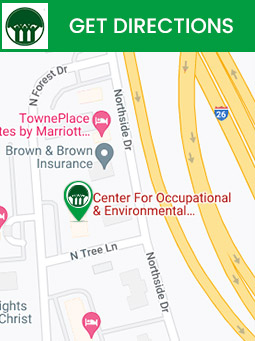Carbon Monoxide Poisoning Treatment Specialist in Charleston, SC
Carbon monoxide poisoning occurs as a result of excessive inhalation of carbon monoxide gas. Prompt treatment can help patients avoid the serious long-term health consequences associated with carbon monoxide poisoning. Get comprehensive and specialized care at The Center for Occupational and Environmental Medicine (COEM). For more information, contact us today or book an appointment online. We are conveniently located at 7510 North Forest Drive North Charleston, SC 29420. Patients routinely fly in to be evaluated by COEM, as we serve patients internationally. Find out if you have been exposed, extensive lab testing is available.




Table of Contents:
What are some of the warning signs indicating carbon monoxide poisoning?
Who is at risk from carbon monoxide poisoning?
How does carbon monoxide poison a person?
Can you recover from carbon monoxide poisoning?
Carbon monoxide poisoning arises when an accumulation of carbon monoxide infiltrates the bloodstream. The primary indicators of carbon monoxide poisoning frequently encompass early symptoms like headaches, shortness of breath, and nausea.
However, more severe exposure can lead to additional warning signs, including chest pain, dizziness, severe headaches, confusion, and more. Carbon monoxide gas is both colorless and odorless, making it virtually imperceptible to the senses.
The warning signs associated with carbon monoxide poisoning may resemble other medical conditions or ailments, underscoring the necessity of seeking diagnosis and care from specialized professionals, such as those at the Center for Occupational and Environmental Medicine.
These symptoms often fluctuate, intensifying when an individual remains in the affected area and becoming milder upon leaving the area or moving outdoors. Healthcare providers often base their diagnosis of carbon monoxide poisoning on known exposure, and they may also employ blood tests to confirm the presence of carbon monoxide in the bloodstream.
Any individuals exposed to carbon monoxide are susceptible to its effects and should promptly seek fresh air and medical attention. Carbon monoxide is produced when burning fuels such as gas, propane, or charcoal. Various appliances and vehicles that rely on fuel emit carbon monoxide.
When these appliances are used and maintained correctly, carbon monoxide levels typically remain at non-hazardous levels. However, malfunctioning or inadequately vented appliances can lead to the accumulation of this gas to dangerous levels.
Certain groups face a higher risk of severe health consequences, including young children, pregnant women, older adults, individuals with pre-existing lung or heart conditions, and smokers.
Inhaling carbon monoxide fumes disrupts the body’s proper utilization of oxygen, potentially causing harm to vital organs such as the brain and heart. Carbon monoxide poisoning can be fatal, and the extent of recovery depends on the duration and amount of exposure to carbon monoxide.
Carbon monoxide poisoning occurs as a result of excessive inhalation of carbon monoxide gas. The dangerous nature of this gas lies in its ability to displace oxygen within the bloodstream when it is breathed in. In the absence of oxygen, cells throughout the body cease to function, leading to organ failure and, in severe cases, substantial tissue damage and can cause death.
Carbon monoxide is a virtually undetectable tasteless, odorless, and colorless gas. Household appliances utilized for heating and cooking have the potential to generate carbon monoxide if they are improperly installed or inadequately maintained.
In general, small quantities of carbon monoxide do not pose significant harm, but poisoning arises when the carbon monoxide levels in the bloodstream reach elevated concentrations. Carbon monoxide is expelled from the lungs and gradually eliminated from the bloodstream over a period of several hours.
Recovery from carbon monoxide poisoning is possible, particularly with prompt treatment, from the specialists at the Center for Occupational and Environmental Medicine, in which case most individuals can expect to recuperate within a few days. Nevertheless, it’s important to be aware that potential long-term complications may emerge over time.
In cases of mild carbon monoxide poisoning, simply getting to fresh air can often suffice. When dealing with more severe poisoning, treatment typically involves administering high concentrations of oxygen, typically delivered via a facial mask. The administration of oxygen in substantial quantities helps to effectively displace the carbon monoxide in the bloodstream.
Carbon monoxide poisoning can result in persistent cognitive, physical, and behavioral symptoms, such as memory problems, balance issues, and mental health concerns. These symptoms can endure even after the removal of the carbon monoxide source.
Carbon monoxide poisoning treatment is available at the Center for Occupational and Environmental Medicine. For more information, contact us today or book an appointment online. We are conveniently located at 7510 North Forest Drive North Charleston, SC 29420. We serve patients from Charleston SC, Mount Pleasant SC, Summerville SC, North Charleston SC, Goose Creek SC, Ladson SC, Hanahan SC, James Island SC, John’s Island SC, Daniel Island SC, West Ashley SC, Moncks Corner SC, Sullivans Island SC, Folly Beach SC, Isle of Palms SC and all of South Carolina, Nationally, and Internationally. Patients routinely fly into Charleston to be evaluated by COEM and to enjoy this beautiful city, which is a Condé Nast and Travel and Leisure Top Domestic and International Tourist Destination.

Additional Services You May Like
- Functional Medicine
- Allergy and Autoimmunity
- Asthma and COPD
- Autoimmune Diseases
- Allergy and Immunology
- Anti Aging Medicine
- Autism and Children
- ADHD
- Bacterial Infections
- Chemical Toxicity
- Candida Fungal Problems
- Cancer Treatment
- Chronic Illness
- Chronic Inflammatory Response Syndrome (CIRS)
- Chronic Fatigue
- Cardiovascular Disease
- Carbon Monoxide Poisoning
- Chelation Therapy
- Depression
- Environmental Medicine
- Ear Ringing and Dizziness
- Fatigue Treatment
- Fertility and Preconception Care
- Gut Health
- Heavy Metal Toxicity
- Hormonal Imbalances
- Headaches and Migraines
- Hormone Balancing (Men & Women)
- Hepatitis
- Integrative Medicine
- Independent Medical Evaluations
- Influenza
- Lab Testing
- Mold Toxicity
- Malnutrition
- Neurodegenerative Disease
- Natural Hormone Balancing For Women
- Preservative-Free IV Therapy
- Stomach Acid Imbalance
- Smoking Cessation Program
- Skin Therapy (Anti-Aging)
- Swine Flu
- Thyroid
- Mold Toxicity
- Vitamin D
- Weight Loss Program
- Women’s Breast Health Formula

Additional Services You May Like
- Functional Medicine
- Allergy and Autoimmunity
- Asthma and COPD
- Autoimmune Diseases
- Allergy and Immunology
- Anti Aging Medicine
- Autism and Children
- ADHD
- Bacterial Infections
- Chemical Toxicity
- Candida Fungal Problems
- Cancer Treatment
- Chronic Illness
- Chronic Fatigue
- Cardiovascular Disease
- Chronic Inflammatory Response Syndrome (CIRS)
- Carbon Monoxide Poisoning
- Chelation Therapy
- Depression
- Environmental Medicine
- Ear Ringing and Dizziness
- Fatigue Treatment
- Fertility and Preconception Care
- Gut Health
- Heavy Metal Toxicity
- Hormonal Imbalances
- Headaches and Migraines
- Hormone Balancing (Men & Women)
- Hepatitis
- Integrative Medicine
- Independent Medical Evaluations
- Influenza
- Lab Testing
- Mold Toxicity
- Malnutrition
- Neurodegenerative Disease
- Natural Hormone Balancing For Women
- Preservative-Free IV Therapy
- Stomach Acid Imbalance
- Smoking Cessation Program
- Skin Therapy (Anti-Aging)
- Swine Flu
- Thyroid
- Mold Toxicity
- Vitamin D
- Weight Loss Program
- Women’s Breast Health Formula










